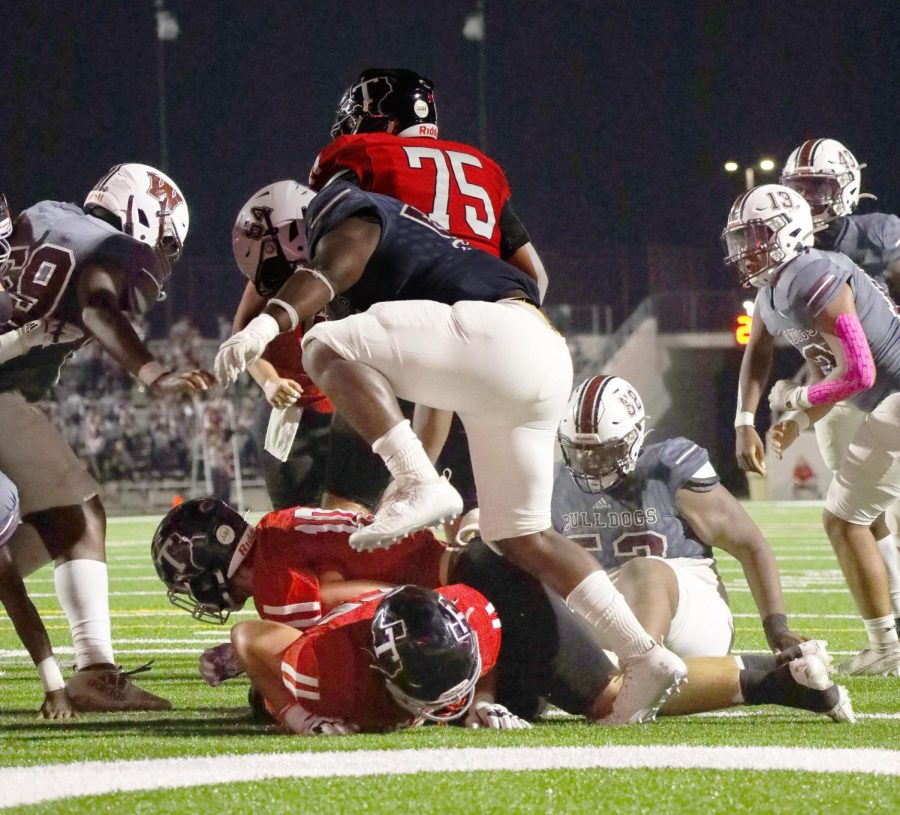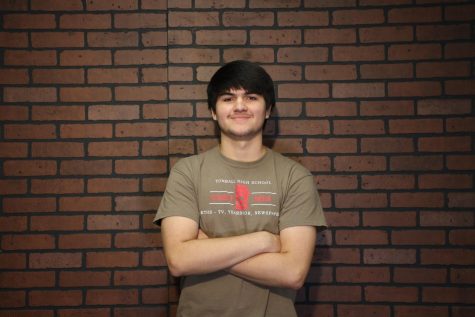Protecting the players: Are we doing enough?
A Cougar player has his head stepped on during a game against Waller. Luckily the helmet protected him.
October 17, 2022
Per the NFL Head, Neck, and Spine Committee a Sport-related concussion (SRC) “is a traumatic brain injury induced by biomechanical forces” which can be obtained through various ways but ultimately can be summed up as an individual being hit with a vast amount of force.
Since the beginning of organized sports, players have been getting hurt. Specifically, in football, big hits are one of the main drawing points, it is what attracts many players to the sport, being allowed to play tough. As time went on it was soon to be realized that being hit day in and out, every week, is not healthy for the body. Fast forward to the present day there are multiple protocols to keep players safe. Numerous brands of pads, helmets and more protective gear help players protect themselves. Many think that this form of protection and growth is substantial, which in many cases proves true. However, when it fails, who is to blame?
In 2011, the National Football League worked with a board of independent directors, NFL-affiliated physicians, and scientists, as well as the NFL Players Association, to create the Game Day Concussion Diagnosis and Management Protocol. Often making amends to the protocol, the overall goal is to have a plan in place so when a player does go down they can properly treat them at the moment. Since the implementation of the protocol, per the NFL Player Health and Safety organization and IQVIA, the number of concussions has continued to drop from 275 in 2015 to 187 in 2021. While the numbers have dropped and the growth of our understanding regarding these injuries has continued to improve, they fail due to a lack of regard for the players.
Recently the protocols have failed Dolphins quarterback, Tua Tagovailoa. Earlier this year, in a close matchup versus the Buffalo Bills, Tagovailoa was pushed back and fell. He was seen hitting the back of his head, and when getting up was seen struggling to stay balanced. It was then deemed a back injury and he was cleared to return to the game, no concussion was detected.
The following week against the Cincinnati Bengals, Tagolvailoa slammed to the ground in what would be one of the most horrific views after a hit. He would not get up and had to be carted off the field. Many immediately took to social media and called upon the NFL and NFLPA to get involved.
Since then, the NFLPA has condemned and fired the independent neurologist who cleared Tagovailoa just a week prior after he clearly displayed signs of a sports-related concussion, Dr. Bennet Omalu has also come out with a statement of his own which was very clear and simple,
“Stop playing. Stop. Hang your helmet and gallantly walk away”.
While not continuing to play is certainly an option, it is incredibly difficult for many players, especially at a professional or even collegiate level where there are millions of dollars at stake ultimately giving the higher-ups an upper hand over these athletes, creating a toxic work environment, directly, a power imbalance.
Even at the high school level, it is not as simple as stepping away from the sport, for some of these athletes it would mean that they would be stepping away from an opportunity to play at a higher level but more importantly, the lessons that many kids bring home not only while playing but the life lasting impacts it imprints amongst these young athletes.
For Texas athletics there is constant change, the University Interscholastic League (UIL) and Texas State Athletic Trainers’ Association have responded and implemented multiple protocols in response to House Bill 2038 regarding prevention, treatment, and oversight of concussions affecting student-athletes.
One major change is the Concussion Oversight Team (COT) which includes at least one Texas-licensed physician, schools must also include one or more, a Texas-licensed athletic trainer, a Texas-licensed advanced practice nurse, a Texas-licensed neuropsychologist, or a Texas-licensed physician assistant. There is also a new concussion protocol that has also been put in place starting with a three-phase plan.
Nonetheless, at any level, it is troubling to just leave the sport but regardless some sort of change has got to be made. Continue to further our research regarding the brain, continue to increase the safety of our players through certain rules and regulations, increase the effectiveness of protection such as padding and helmets, teach proper techniques, and overall just listen and make sure you are playing your part.






